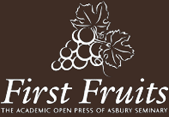Abstract
In their book, The Way We Think: Conceptual Blending and the Mind’s Hidden Complexities (2002), Gilles Fauconnier and Mark Turner describe within Conceptual Integration Theory (CIT) a set of “vital relations” (VRs) at the core of meaning making that compress and blend ideas simultaneously. “Compression in blending networks operates on a surprisingly small set of relations rooted in fundamental human neurobiology and shared social experience. These vital relations, which include Cause-Effect, Change, Time, Identity, Intentionality, Representation, and Part-Whole, not only apply across mental spaces but also define essential topology within mental spaces” (xiii). Additional VRs include Role, Analogy, Disanalogy, Property, Similarity, Category, Intentionality, and Uniqueness. Taken as a whole, these VRs correspond quite well with Major Structural Relationships (MSRs) as used in Inductive Bible Study (IBS), which include Recurrence, Comparison, Contrast, Introduction, Causation, Substantiation, Generalization, Particularization, Summarization, Problem-Solution, Instrumentation, Pivot, and Climax. These MSRs are ubiquitous and observable across all types of human communication. The observation of MSRs occurs at all levels of discourse (phrases, clause, paragraph, sections, units, and discourse as a whole). In written discourse, these relations are both explicitly marked through conjunctions and particles and implicitly indicated through literary arrangement and inference. This article explores how VRs and MSRs mutually inform one another, and illustrate through many examples how the application of VRs and MSRs may successfully instruct students of Scripture, not only to make acute observations of biblical materials, but also of all human discourse.
DOI
10.7252/Journal.07.2017S.09
Recommended Citation
Long, Fredrick J.
(2017)
"Vital Relations and Major Structural Relationships: Heuristic Approaches to Observe and Explore Biblical and Other Discourse,"
The Journal of Inductive Biblical Studies:
Vol. 4:
Iss.
2, p. 92-128.
Available at:
https://place.asburyseminary.edu/jibs/vol4/iss2/3
